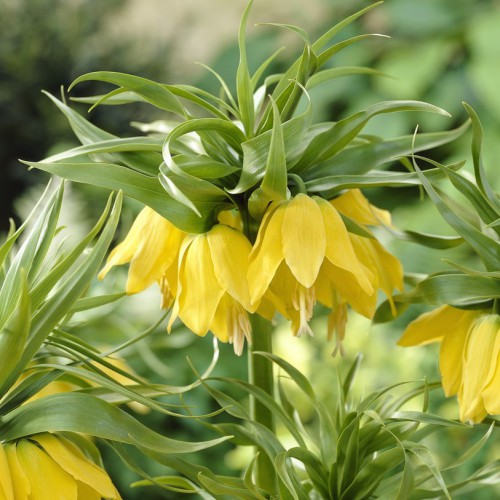
| Jan | Feb | Mar | Apr | May | Jun | Jul | Aug | Sep | Oct | Nov | Dec | |
|---|---|---|---|---|---|---|---|---|---|---|---|---|
| Planting | ||||||||||||
| Flowering | ||||||||||||
| Availability |
Fritillaria Imperialis Maxima Lutea
Fritillaria lutea, often referred to as the yellow fritillary, is a remarkable species of flowering plant that belongs to the diverse lily family (Liliaceae). Known for its striking, bell-shaped yellow flowers, which typically emerge in late spring, this perennial species presents an enchanting display as the blooms sway gracefully atop slender, erect stems that can reach heights of 90 centimetres.
Indigenous to the mountainous regions of southern Europe, particularly in places like the Alps and the Pyrenees, Fritillaria lutea thrives in well-draining, rocky soils, often dotting meadows and open woodlands. Its linear, deep green foliage consists of narrow, lanceolate leaves that grow in a whorled arrangement, creating a lush setting for the vibrant flowers to shine.
This enchanting plant not only serves as an ornamental specimen admired in gardens but also plays a crucial role in its ecosystem by attracting a variety of pollinators, including bees and butterflies, that are essential for its reproduction. With a preference for full sun to partial shade, Fritillaria lutea can also tolerate cooler temperatures, making it a versatile choice for gardeners looking to enhance their landscapes with a touch of alpine charm.
| Colour | Yellow |
|---|---|
| Height | 100cm |
| Flowers | April/May |
| Planting Depth | 20cm |
| Distance Apart | 20cm |
| Bulb Size | 20+cm |
